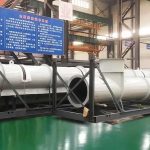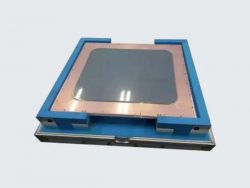IGZO Target
IGZO target is a crucial material used in the manufacturing of transparent conductive oxide (TCO) thin-film transistors (TFTs). It is a composite material composed of indium oxide (In₂O₃), gallium oxide (Ga₂O₃), and zinc oxide (ZnO). IGZO TFTs offer superior performance, such as high electron mobility, transparency, and low power consumption. Therefore, IGZO targets are highly demanded in the electronics industry, specifically in the production of LCDs, OLEDs, and touchscreens.
Operating Principle of IGZO Target
IGZO (indium-gallium-zinc oxide) targets are used in sputter deposition processes to create thin films of transparent conductive oxides (TCOs) that exhibit excellent electrical and optical properties. During sputter deposition, positively charged ions, such as argon, are accelerated towards the negatively charged IGZO target. This bombardment of ions ejects atoms from the target surface, which then deposit onto a substrate to form a thin film.
The indium, gallium, and zinc oxide material properties of the IGZO target enable the formation of high-quality thin films with improved electronic performance. The presence of gallium in the IGZO target allows for higher electron mobility, while zinc aids in stabilizing the crystal structure and reducing lattice defects. These properties make IGZO targets a popular choice for creating thin-film transistors (TFTs), such as those found in LCD displays and touchscreens, due to their high electrical conductivity, transparency, and low power consumption.
Overall, the operating principle of IGZO targets involves the use of sputter deposition technology to create high-quality TCO thin films with exceptional electrical and optical properties, making them a valuable component in electronic devices.
Manufacturing Process of IGZO target
The manufacturing process of IGZO targets involves several steps, including the production of IGZO powder, target fabrication, and sintering.
The first step involves the production of IGZO powder using techniques such as solid-state reactions, spray pyrolysis, and pulsed laser deposition. These methods create a high-quality IGZO powder with controlled particle size and composition.
In the second step, the IGZO powder is pressed into a target shape using a hydraulic press with a pressure between 15-30 MPa. The powder is placed in a die and subjected to continuous pressure to ensure uniform density and shape.
Lastly, the sintering step involves heating the IGZO target at high temperatures, typically around 1500°C, in a vacuum or controlled atmosphere furnace. This process fuses the IGZO powder particles together to form a dense and uniform target material suitable for use in sputtering processes.
Overall, the manufacturing process of IGZO targets requires careful control of the particle size and composition of the IGZO powder, as well as precise target fabrication and sintering conditions. These variables can significantly impact the final quality and performance of the IGZO targets, making it important to ensure consistency and accuracy throughout the manufacturing process.
Challenges and Opportunities of IGZO target
The production of IGZO targets faces several challenges, including the complexity of the manufacturing process and high costs associated with the use of indium, gallium, and zinc. Additionally, the availability of high-quality IGZO powder suitable for target fabrication can be limited, further increasing production costs.
However, despite these challenges, there are several opportunities for further development and innovation in the field. One significant opportunity is the ongoing research into potential alternative materials that can replace or reduce the use of indium, gallium, and zinc in IGZO targets. Other opportunities include the optimization of target fabrication and sintering processes to reduce costs and increase efficiency.
Furthermore, as the demand for electronic devices such as LCD displays, OLEDs, and touchscreens continues to grow, the market for IGZO targets is expected to see sustained demand. To meet this demand, industry players are pursuing collaborations and partnerships to improve production and lower costs.
In conclusion, while the manufacturing of IGZO targets faces challenges, the opportunities for research, development, and collaboration continue to drive progress in this field, with the potential to significantly impact the electronics industry.













